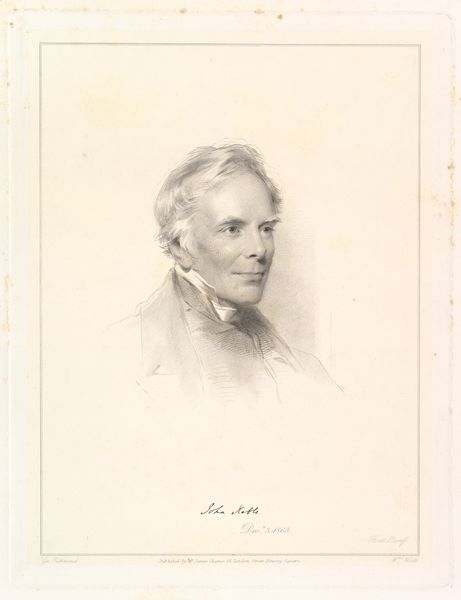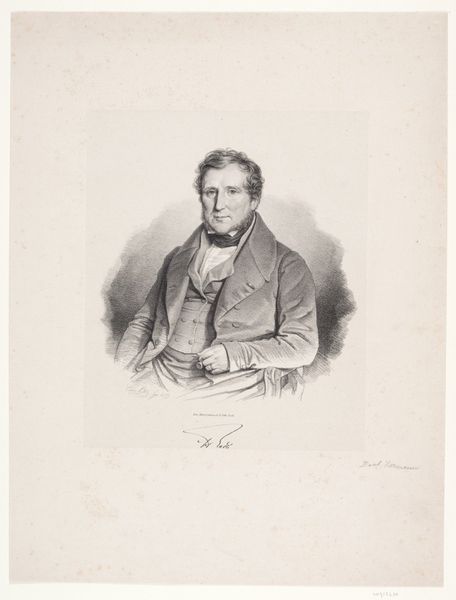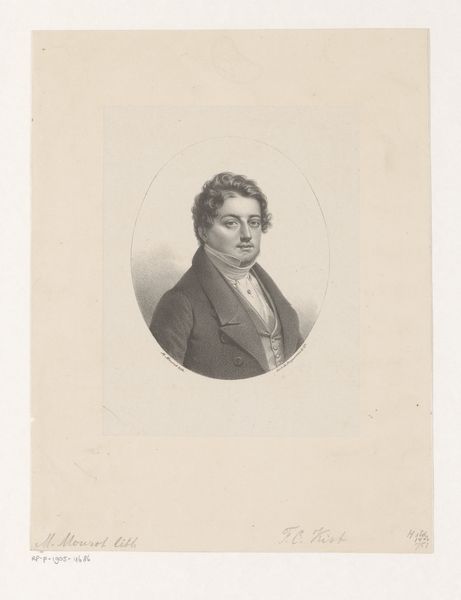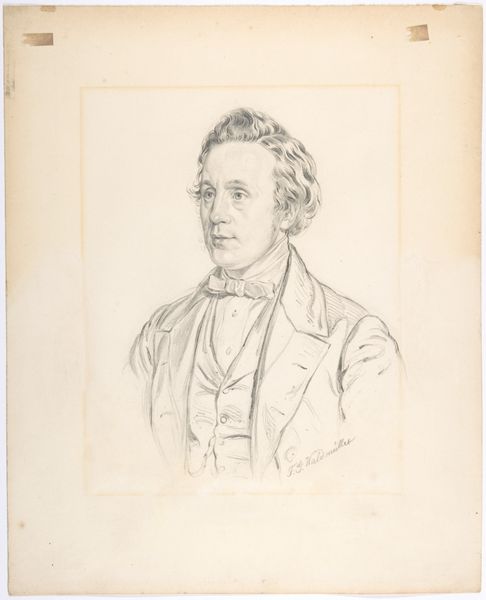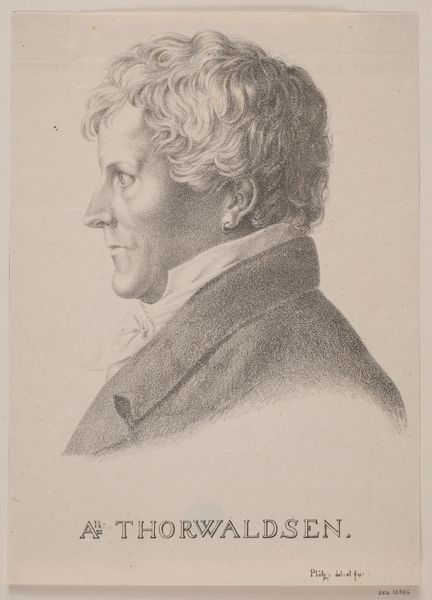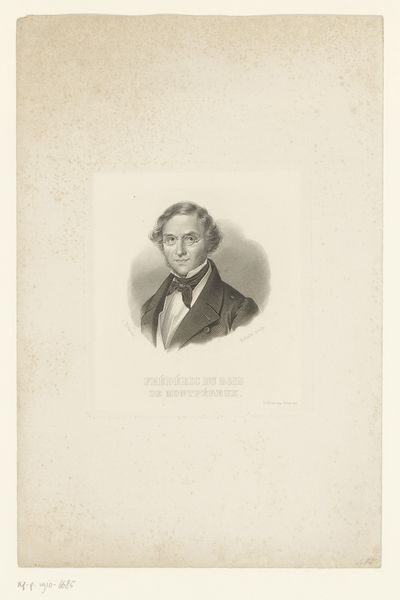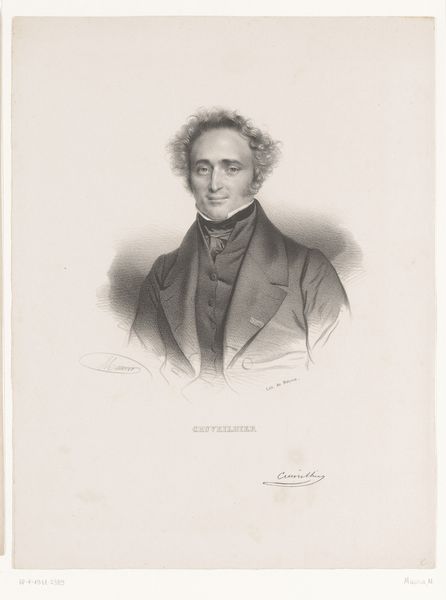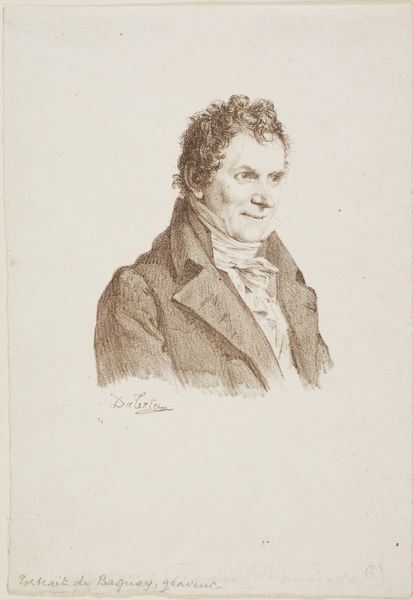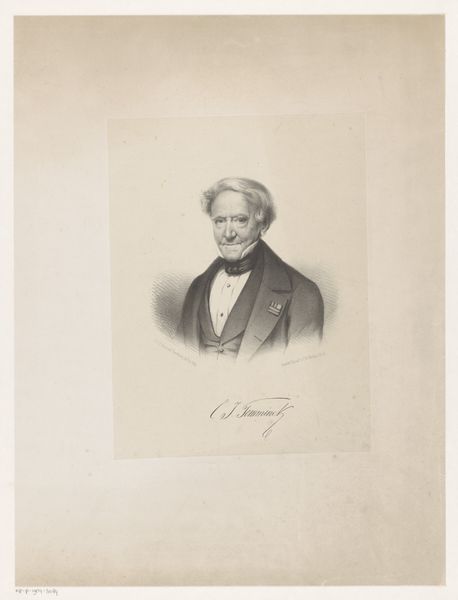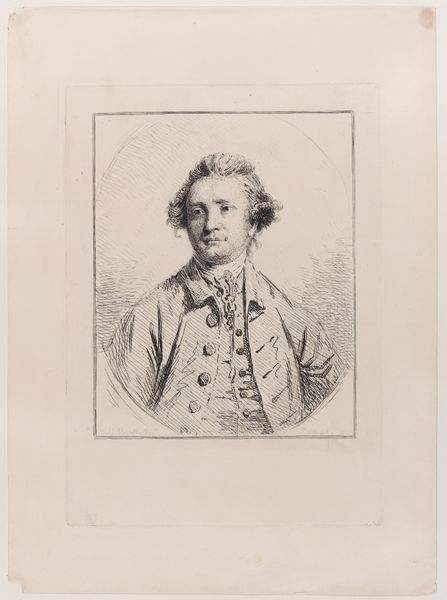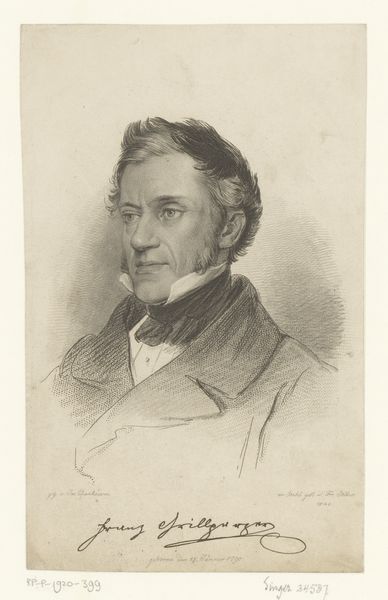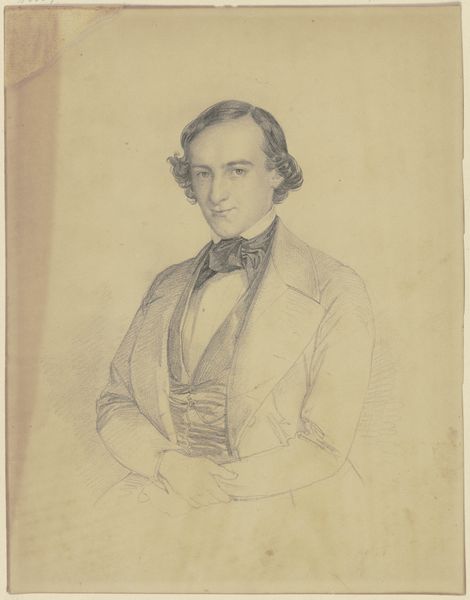
Dimensions: Plate: 12 15/16 × 9 in. (32.8 × 22.8 cm) Sheet: 17 3/8 × 11 5/8 in. (44.1 × 29.5 cm)
Copyright: Public Domain
Curator: My first thought? Contemplative, and just a bit weary. Editor: That’s interesting. This is George Richmond’s portrait of Michael Faraday, completed in 1852. It’s a graphite drawing, held by the Metropolitan Museum of Art. Curator: Graphite can be so deceiving, can't it? We think 'pencil sketch' but, look closely, the way Richmond builds up tone! He achieves an incredible level of detail with such a humble medium. And I wonder if Faraday even fidgeted as he posed? Editor: I'm sure Richmond, as a sought-after society portraitist, knew how to put his sitters at ease. This portrait speaks to the Victorian era's focus on depicting men of science as serious intellectual figures. We see similar portraits in the Royal Society's collection, establishing a visual record of scientific accomplishment. Curator: A visual record, indeed! Though you see scientific accomplishment, I sense quiet strength—look at his eyes. There's a certain vulnerability there, a feeling out of place somehow. Editor: Or perhaps that vulnerability comes from the relatively recent trend, at the time, of representing prominent men outside the standard traditions of painting, like large oil paintings. Something in pencil felt maybe more revealing to some than something in oils. Curator: Possibly...or a clever mirroring, right? Faraday revolutionized our understanding of electromagnetism and, with the soft strokes and gradations here, Richmond visualizes the very ethereal nature of that invisible force. I’m probably projecting. Editor: It's fascinating how we each bring our perspectives. I’m always stuck on the Victorian mania for documentation, for classifying people and their contributions…It overshadows what can feel spontaneous in it. Curator: So, for you, the drawing acts almost as an institutional endorsement, where for me it offers a chance to touch on the invisible energies of thought and discovery... Editor: Precisely! Richmond’s Faraday offers a peek into how Victorian society canonized its scientific heroes. Curator: ...and for me, this sketch captures the very electricity that made him a hero to begin with! What a wonderful, almost magnetic tension, that little argument holds...
Comments
No comments
Be the first to comment and join the conversation on the ultimate creative platform.

